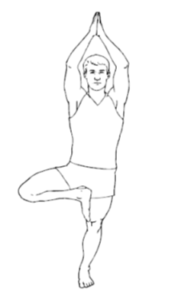The Swiss Army Exercise
095
Modern life is filled with appliances, toys, and gadgets that combine several functions into one. Many of these, if not most, are of the electronic variety, such as TV/DVD/VCR combos, CD/tuner/MP3 players and, of course, the pride and joy of every middle-aged male – the Universal Remote Control.
The iconic combination device of my youth was more mechanical in nature. The Swiss Army Knife was the pinnacle of perfection in engineering excellence. At least, that’s how every kid saw it; we just had to have it if we were to be really cool. Containing a multitude of blades, tools, and gizmos within a single, compact housing, the SAK represented the best in precision and ingenuity – it could do it all!
Reminded recently of this great all-in-one tool, I began to think: wouldn’t it be great if there was a single exercise that incorporated a variety of movements and functions that have been shown to be effective in preventing injuries! How much more convenient would it be if there could be a combination exercise that addressed several movement impairments at once. Wouldn’t it be wonderful to find a Swiss Army Exercise?
I’d like to say I invented such an exercise but, to be honest, it was more a case of seeing a particular exercise in a magazine and recognizing that it single-handedly addresses at least three or four different deficiencies commonly found in runners, all of which have been discussed in previous installments of this column. This exercise, described below, is actually a yoga position (the Tree Pose), modified slightly to include other muscle actions.
Very simply, you stand on one leg (preferably barefoot, on an on-slip surface), with the other foot placed against the straight knee. The hands are placed together, either above the head or, if that is too difficult, in front of the chest. The lower abdomen is pulled inward, without lifting the ribs or chest upward. The kneecap of the weight-bearing leg should stay positioned directly over the middle toes of the foot; don’t let it rotate inward. The shoulders and pelvis should remain level.
Start with the raised leg in a relaxed position and then,once steady and balanced, rotate the knee as far outward as possible without turning the hips or trunk. Hold 3 seconds, and then relax that leg back to the comfortable starting position. Repeat 10 times and then switch to the other leg.
What makes this an effective exercise? Looking back at previous columns, we can dissect the various components as follows:
- Articles #34 and 80 examined the importance of maintaining good strength and stability of the deep abdominal and back muscles (the “core”). This, coupled with balance training, helps provide a stable platform for the extremities. The tree pose incorporates both aspects.
- Articles #72, 89, and 92 talked about the relationship between strong hip muscles, particularly the abductors and external rotators, and reductions in the incidence of knee pain. Both muscle groups are worked here by maintaining a level trunk and pelvis (weight bearing leg) and when rotating the other leg outward.
- The relationship of excessive foot pronation with any number of running injuries has been covered in several articles (Articles #3 and 4, 13, 74). The connection between that pronation movement and poor hip strength and control has also been examined (Article #58). The tree pose, if done precisely and correctly, can effectively minimize or eliminate improper pronation of the foot by improving hip stability.
This modified tree pose comes as close as anything I’ve come across to being the Perfect Exercise. It’s simple, easy to perform, and completely portable. It requires no special equipment but will, if performed regularly, help keep yours in tiptop shape.

